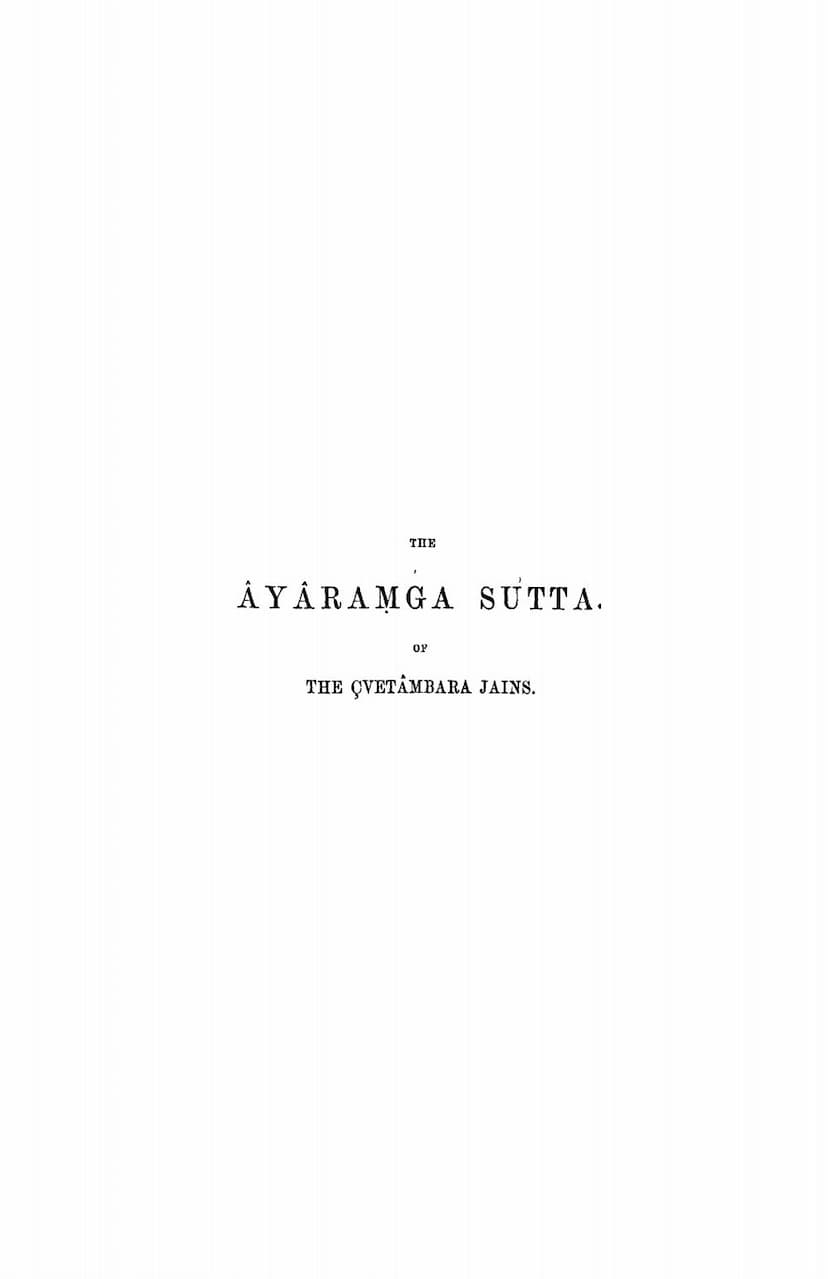Ayaramga Sutta
Added to library: September 1, 2025

Summary
The provided text is the English translation and transcription of the Ayaramga Sutta (also known as Acārāṅga Sūtra), edited by Hermann Jacobi and published by the Pali Text Society in 1882. This summary will focus on the preface and the initial portion of the text, as the full transcription is extensive.
Overall Context:
The Ayaramga Sutta is a foundational text of Jainism, specifically belonging to the Śvetāmbara tradition. It is part of the Agamas, the sacred scriptures of the Jains. This particular edition, compiled and edited by Hermann Jacobi, aims to make this important Jain text accessible to European scholars and the broader academic community.
Key Themes and Content (Based on the Preface and initial text):
- Jainism and Buddhism: The preface highlights the significance of including a Jain text in the Pali Text Society's publications. It acknowledges that Jainism and Buddhism, while having shared origins and intellectual contexts, represent distinct and sometimes opposing philosophical and religious traditions. The editor anticipates that Buddhist subscribers might initially view this inclusion as an "intrusion" but argues for its value.
- Historical Context: The preface emphasizes that the Nigantha Nataputta (the founder of Jainism, Mahavira) was a contemporary of Gautama Buddha. Therefore, studying Jain texts like the Ayaramga Sutta is crucial for understanding the intellectual and moral landscape of ancient India during the rise of Buddhism. It provides insights into the "questions and topics" that Buddha addressed, offering a comparative perspective on early Indian religious thought.
- Reconstruction of Early Jainism: Jacobi notes that while Buddhist Pitakas frequently mention the Niganthas (Jains), they do not offer a clear exposition of the sect's doctrines and institutions. This makes the Ayaramga Sutta, as a text from within the Jain tradition itself, invaluable for a more accurate understanding of early Jainism.
- Linguistic and Grammatical Analysis: A significant portion of the preface is dedicated to comparing Jain Prākrit with Pāli, the language of early Buddhist scriptures. Jacobi outlines the grammatical and phonetic differences between the two dialects, providing detailed examples of vowel and consonant changes, declensional forms, and verbal conjugations. This section serves as a guide for Pāli scholars venturing into Jain literature.
- The Ayaramga Sutta Text:
- Title and Meaning: The title "Ayaramga Sutta" is translated as "The Âyâramga Sutta." The text itself begins with "Sutam me, âusam!" ("Thus have I heard, O friend!"), a common opening in Buddhist and Jain scriptures.
- Core Teachings: The initial chapters (Satthaparinnâ - "Complete Knowledge") focus on the concept of "parinna" (complete knowledge or understanding). This is presented in the context of the understanding of the self, the world, and the nature of actions (karma).
- Ethical Conduct: The text emphasizes the importance of non-violence (ahimsa) and the consequences of actions. It discusses the nature of existence, the self (âtmā), and the cyclical nature of birth and death.
- Renunciation: The text outlines the conduct of an ascetic (anagâra) who has renounced worldly life. This includes principles related to food, possessions, and interactions with the world.
- The Five Vows (Maha-vratas): While not explicitly listed in the initial excerpt, the emphasis on non-violence, truthfulness, non-stealing, celibacy, and non-possession are central to Jain asceticism and are implicitly conveyed through the ethical guidelines presented.
- Delineation of Practices: The Ayaramga Sutta meticulously details the appropriate and inappropriate actions, thoughts, and speech for an ascetic, covering various aspects of daily life, from movement and speech to eating and sleeping. It emphasizes mindfulness and self-control in all activities.
- Emphasis on "Parinnâ": The repeated emphasis on "parinnâ" (complete knowledge) suggests that understanding the true nature of reality, the self, and the consequences of actions is paramount for liberation.
Editorial Approach:
Jacobi explains his methodology for producing the text, mentioning the use of two old manuscripts (MSS. A and B) and a Calcutta edition. He discusses orthographical variations and his decisions on how to present them, including the use of italics for consonants retained only in one manuscript. He also notes the division of the text into paragraphs and the marginal page numbers referencing the Calcutta edition for ease of cross-referencing with commentaries.
In Summary:
The Ayaramga Sutta, as presented by Jacobi, is a critical early Jain text that provides a detailed account of the ethical principles and ascetic practices central to Jainism. Its inclusion by the Pali Text Society underscores its importance for understanding the religious and philosophical milieu of ancient India, offering a valuable counterpart to Buddhist scriptures for comparative study. The preface itself is a significant scholarly work, detailing the linguistic relationship between Pāli and Jain Prākrit and outlining the meticulous editorial process.